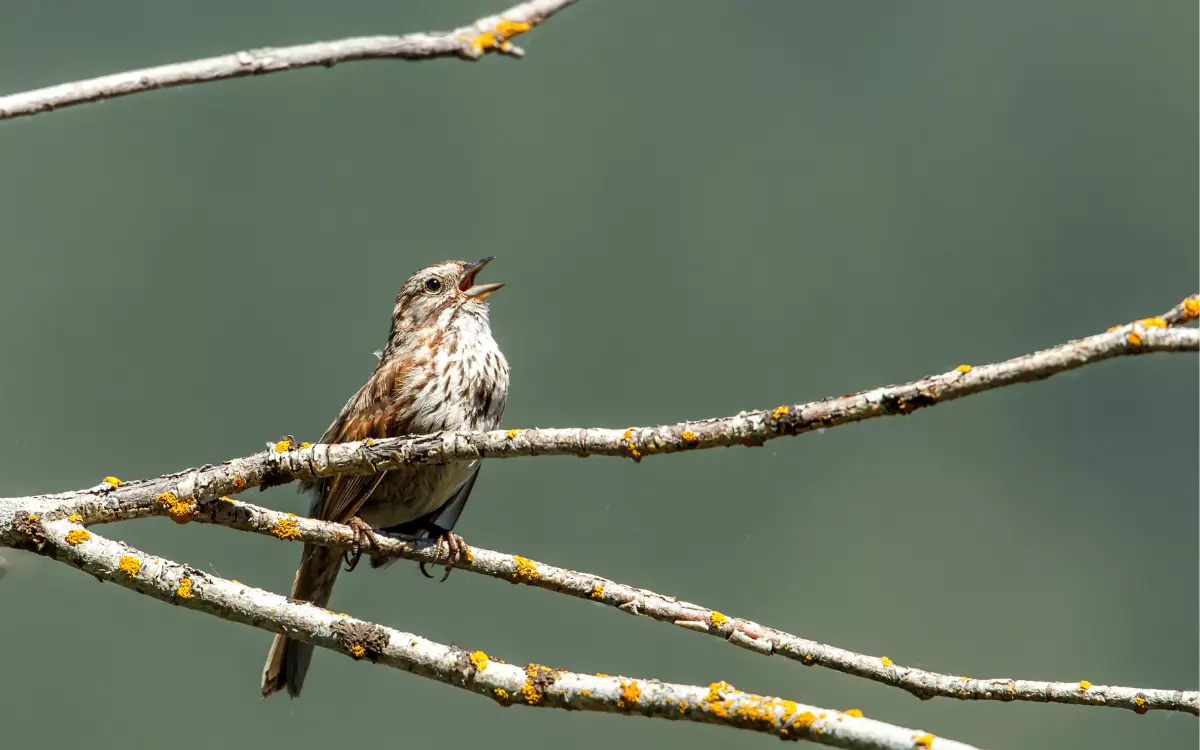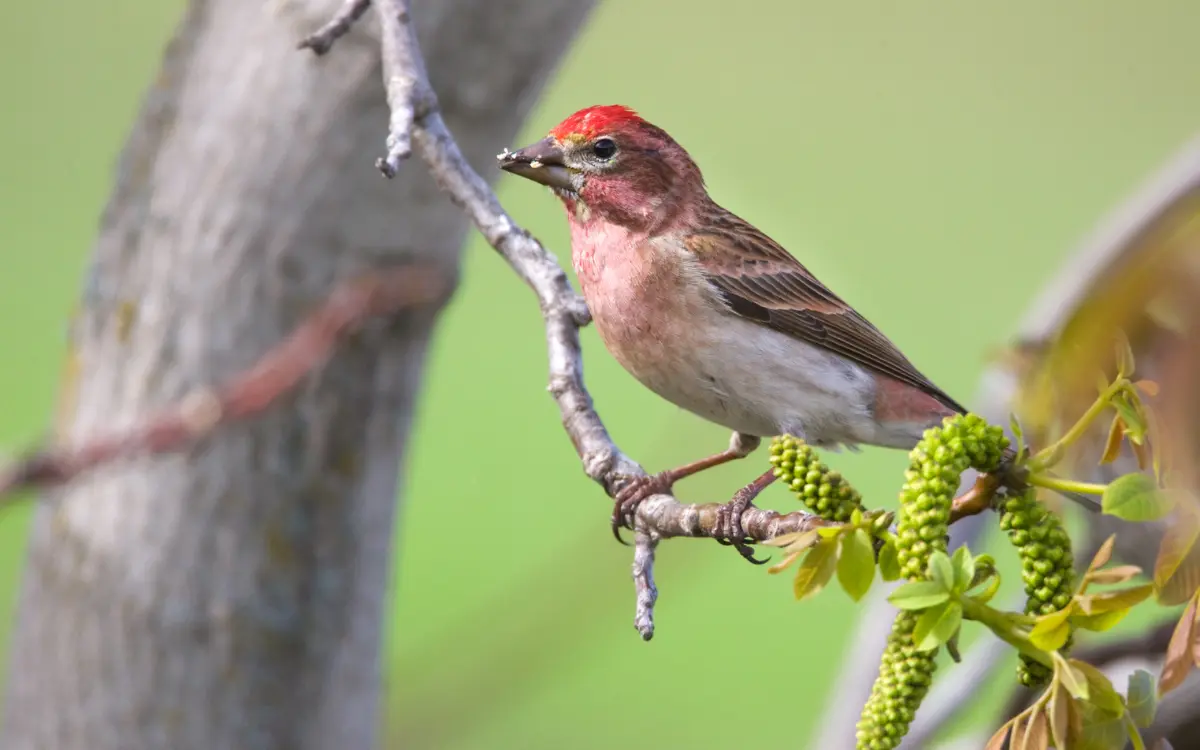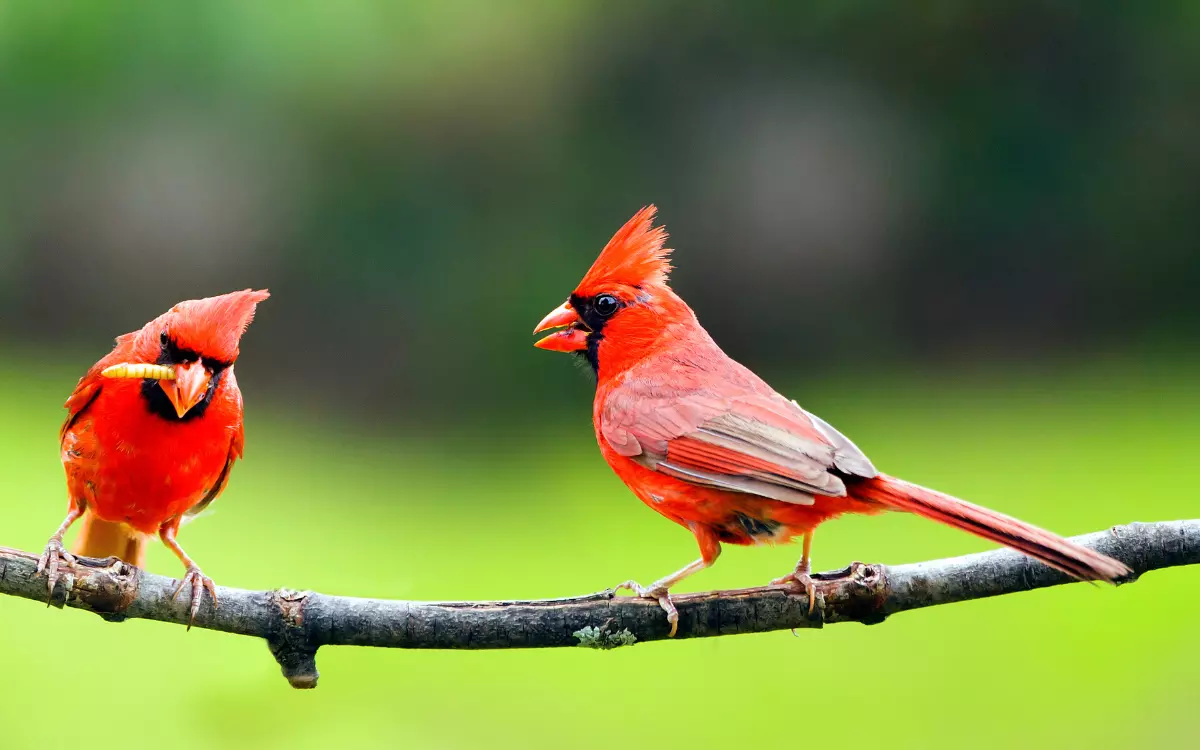14 Ducks found in Louisiana with IDs and photos
Louisiana’s various habitats host a variety of duck species, from the ducks found in Louisiana like the Mallard to the rarer Canvasback, enriching its wetlands.
Louisiana all Ducks information with images :
1.Blue-winged Teal (Spatula discors):

- Kingdom: Animalia
- Phylum: Chordata
- Class: Aves
- Order: Anseriformes
- Family: Anatidae
- Genus: Spatula
- Species: Spatula discors
The Blue-winged Teal is a small, sleek duck with a distinctive blue patch on its wings. They are migratory, traveling long distances between breeding and wintering areas. Their diet mainly consists of seeds and insects, which they forage from the water’s surface.
These ducks nest on the ground, hidden in tall grasses near water. A female typically lays 6-9 eggs each year. The lifespan of a Blue-winged Teal in the wild is about 10-15 years, making them a resilient species within their habitats.
- Length: 14-16 in (35.5-40.6 cm)
- Weight: around 13 oz (0.37 kg)
- Wingspan: 22-24 in (55.9-60.9 cm)
2.Wood Duck (Aix sponsa):

- Kingdom: Animalia
- Phylum: Chordata
- Class: Aves
- Order: Anseriformes
- Family: Anatidae
- Genus: Aix
- Species: Aix sponsa
The Wood Duck is one of the most strikingly colorful waterfowl. It features vibrant iridescent plumage and distinctive patterns. These ducks are resident birds in parts of their range, meaning they don’t migrate far.
They dine on insects, seeds, and fruit. Wood Ducks nest in tree cavities near water, an unusual choice among ducks. Each season, a female can lay about 6-15 eggs. The typical lifespan of a Wood Duck in the wild is 4-7 years, though some can live longer under the right conditions.
- Length: 19-21 in (48-54 cm)
- Weight: 16.0-30.4 oz (0.45-0.86 kg)
- Wingspan: 26-29 in (66-73 cm)
3.Green-winged Teal (Anas crecca):
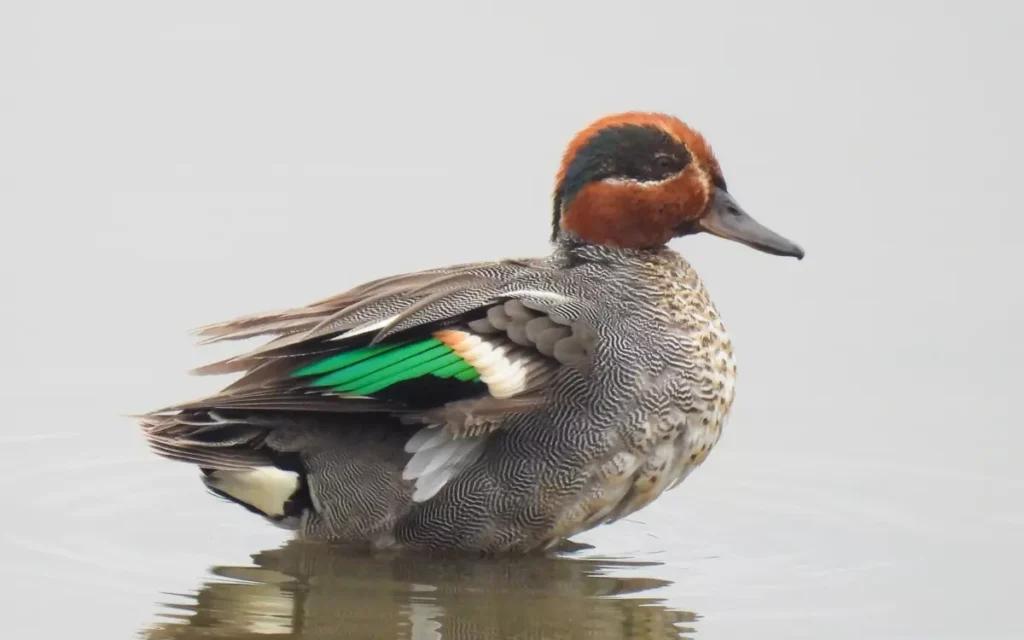
- Kingdom: Animalia
- Phylum: Chordata
- Class: Aves
- Order: Anseriformes
- Family: Anatidae
- Genus: Anas
- Species: A. crecca
The Green-winged Teal is the smallest member of the duck family in North America, notable for the green stripe running from its eye to the back of its head. These ducks are migratory, flying to warmer areas for the winter. Their diet consists primarily of plant material and small invertebrates.
Green-winged Teals prefer to nest on the ground in dense marsh vegetation. A female typically lays about 6-11 eggs each year. The lifespan of a Green-winged Teal is generally 10-20 years, depending on environmental conditions.
- Length: 12.2-15.3 in (31-39 cm)
- Weight: 4.9-17.6 oz (140-500 g)
- Wingspan: 20.5-23.2 in (52-59 cm)
4.Canvasback (Aythya valisineria):
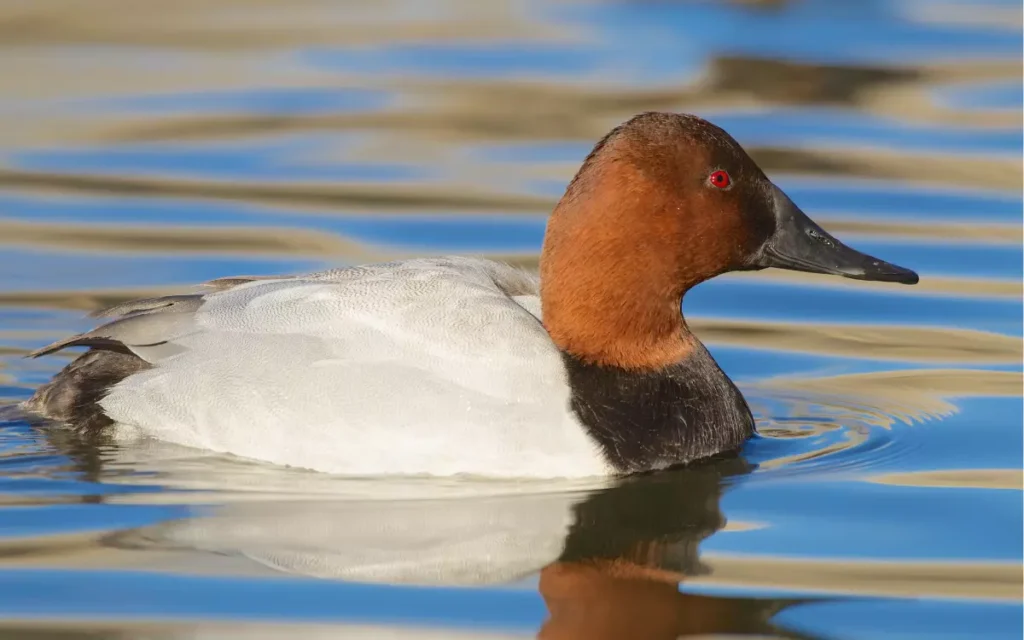
- Kingdom: Animalia
- Phylum: Chordata
- Class: Aves
- Order: Anseriformes
- Family: Anatidae
- Genus: Aythya
- Species: Aythya valisineria
The Canvasback is a large diving duck recognized for its sleek profile and distinctive reddish head. These ducks are migratory, traveling to find the best habitats each season. They primarily feed on aquatic plants, but also eat insects and small fish.
Canvasbacks nest near water, building their nests directly on the ground or in low vegetation. Each year, a female Canvasback typically lays 5-11 eggs. The lifespan of a Canvasback in the wild is about 15-20 years, showcasing their resilience in diverse environments.
- Length: 20-24 in (50-61 cm)
- Weight: 2.5-3.5 lbs (1.1-1.6 kg)
- Wingspan: 30-35 in (76-89 cm)
5.Redhead (Aythya americana):

- Kingdom: Animalia
- Phylum: Chordata
- Class: Aves
- Order: Anseriformes
- Family: Anatidae
- Genus: Aythya
- Species: Aythya americana
The Redhead is easily identified by its bright red head and blue bill. These medium-sized ducks are migratory, traveling across North America to find suitable habitats. Redheads feast on aquatic plants and small invertebrates, like insects and mollusks.
They prefer to nest in dense marshes, often using nests built by other ducks. A female Redhead lays about 7-14 eggs each breeding season. The average lifespan of a Redhead in the wild is around 5-8 years, though some individuals may live longer under favorable conditions.
- Length: 16.5-21.3 in (42-54 cm)
- Weight: 1.5-3.2 lb (0.68-1.45 kg)
- Wingspan: 29.5-31 in (75-79 cm)
6.Mallard (Anas platyrhynchos):
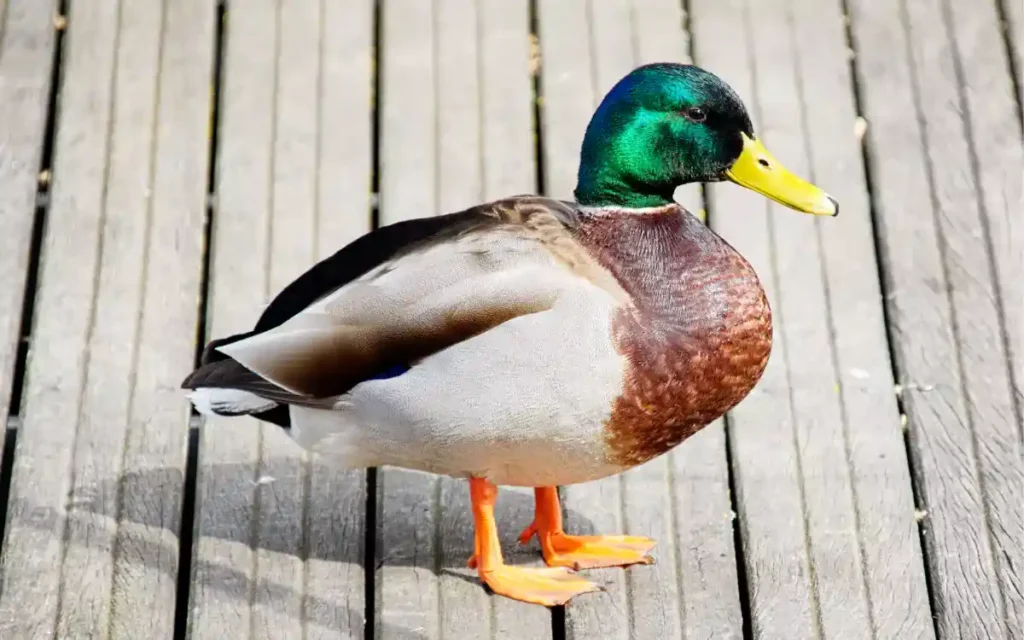
- Kingdom: Animalia
- Phylum: Chordata
- Class: Aves
- Order: Anseriformes
- Family: Anatidae
- Genus: Anas
- Species: Anas platyrhynchos
The Mallard is a familiar duck with its green head (in males) and distinctive white neck ring. These ducks are both migratory and resident, depending on their location. Mallards are omnivorous, eating a mix of aquatic plants, grains, and small animals.
They are flexible nesters, often found in marshes or grasslands, and sometimes in urban parks. A female Mallard typically lays about 8-13 eggs per season. The lifespan of Mallards in the wild can vary widely, generally around 5-10 years, influenced by their adaptable nature and surroundings.
- Length: 19.7-25.6 in (50-65 cm)
- Weight: 35.3-45.9 oz (1.0-1.3 kg)
- Wingspan: 32.3-37.4 in (82-95 cm)
Read also: 9 Geese & Swans Found In Louisiana
7.Ring-necked Duck (Aythya collaris):

- Kingdom: Animalia
- Phylum: Chordata
- Class: Aves
- Order: Anseriformes
- Family: Anatidae
- Genus: Aythya
- Species: Aythya collaris
The Ring-necked Duck is recognized by its boldly patterned black and white body and subtle chestnut neck ring. They are migratory ducks, traveling to lakes and ponds across North America. Their diet includes aquatic plants and small fish.
Ring-necked Ducks nest in secluded marsh areas, often on small islands. A female typically lays about 8-10 eggs each breeding season. The lifespan of Ring-necked Ducks in the wild is generally 5-7 years, though individuals in protected areas may live longer due to fewer natural threats.
- Length: 15.3-18.1 in (39-46 cm)
- Weight: 17.3-32.1 oz (490-910 g)
- Wingspan: 24.4-24.8 in (62-63 cm)
8.Northern Pintail (Anas acuta):
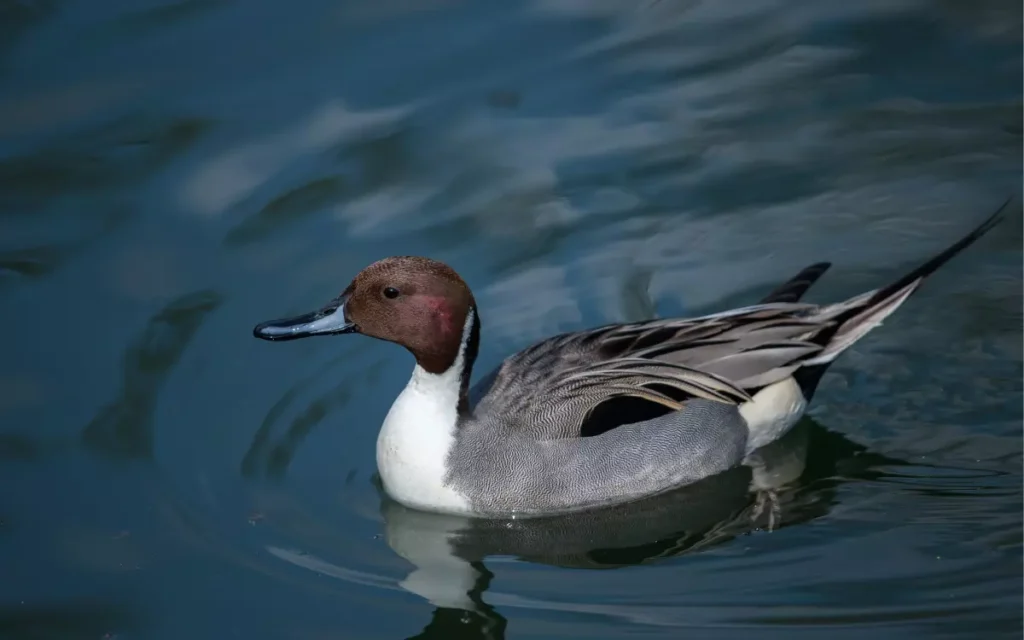
- Kingdom: Animalia
- Phylum: Chordata
- Class: Aves
- Order: Anseriformes
- Family: Anatidae
- Genus: Anas
- Species: Anas acuta
The Northern Pintail stands out with its elegant long tail and sleek body. They are migratory, covering vast distances between breeding and wintering grounds. Northern Pintails eat seeds, aquatic insects, and crustaceans.
They nest directly on the ground, often in open areas near water. A female Pintail typically lays 7-9 eggs each season. The lifespan of Northern Pintails can reach up to 10-15 years in the wild, although many face challenges like habitat loss and hunting which may affect their longevity.
- Length: 20.1-29.9 in (51-76 cm)
- Weight: 17.6-51.1 oz (500-1450 g)
- Wingspan: 34.0 in (86.4 cm)
9.Gadwall (Mareca strepera):
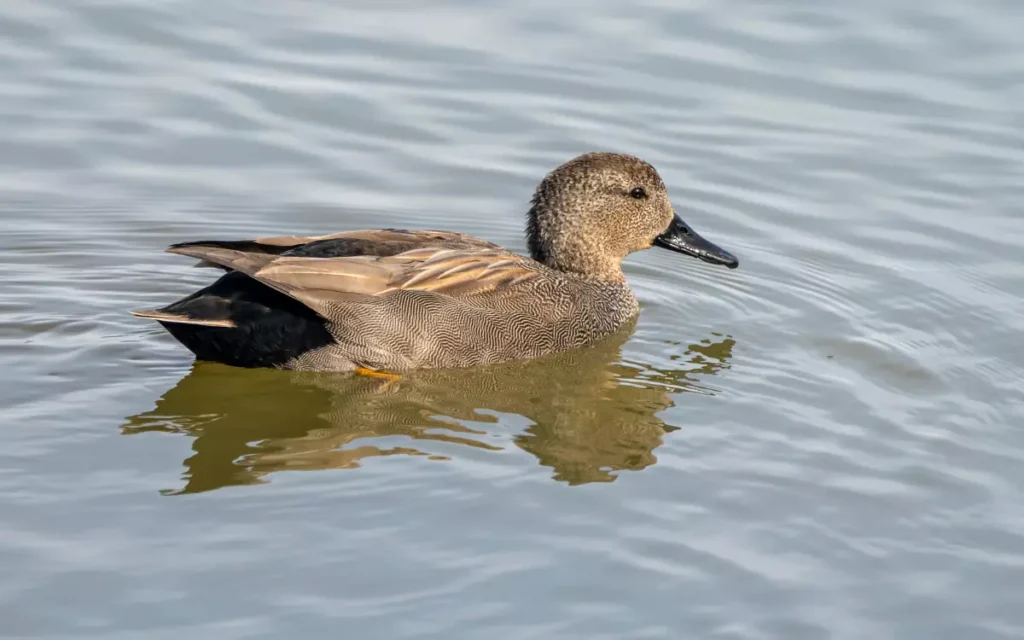
- Kingdom: Animalia
- Phylum: Chordata
- Class: Aves
- Order: Anseriformes
- Family: Anatidae
- Genus: Mareca
- Species: Mareca strepera
The Gadwall is a subtle yet elegant duck with a mottled brown body and a black rear. They are primarily migratory, traveling to warmer regions during winter. Gadwalls primarily feed on aquatic vegetation and small invertebrates.
They nest in dense marsh vegetation, often reusing old nests from other ducks. A female Gadwall usually lays about 7-12 eggs each breeding cycle. The lifespan of a Gadwall in the wild is typically around 10-15 years, depending on environmental conditions and predation pressures.
- Length: 18-22 in (46-56 cm)
- Weight: 17.6-35.2 oz (500-1000 g)
- Wingspan: 31-35 in (79-89 cm)
10.American Wigeon (Mareca americana):
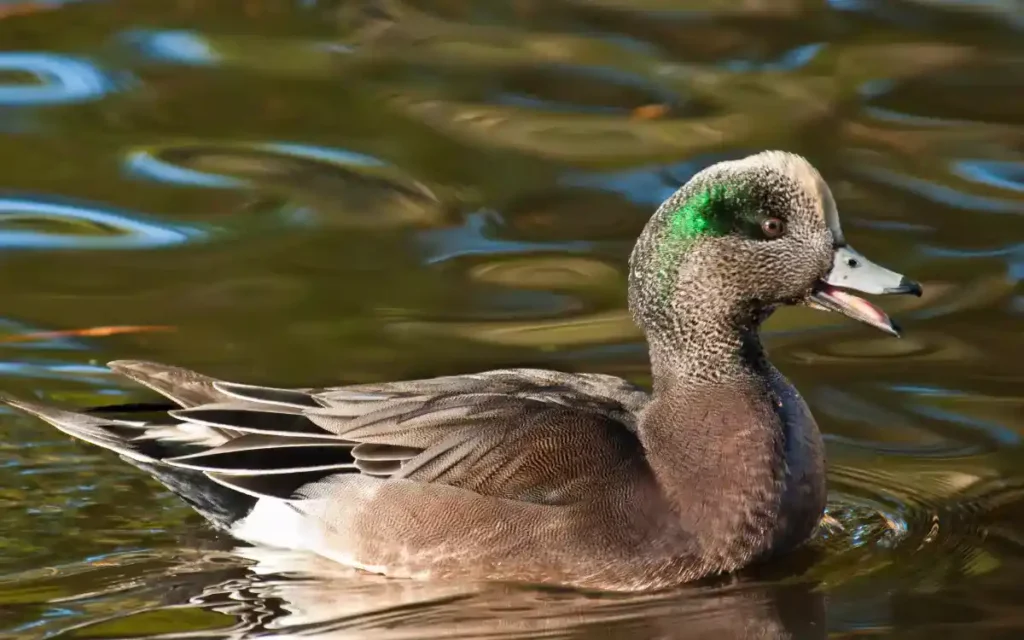
- Kingdom: Animalia
- Phylum: Chordata
- Class: Aves
- Order: Anseriformes
- Family: Anatidae
- Genus: Mareca
- Species: Mareca americana
The American Wigeon, also known as the “baldpate,” features a distinctive white stripe on its head. These ducks are migratory, wintering in warmer southern areas. Their diet includes aquatic plants, supplemented by grains and insects.
American Wigeons often nest on the ground near water, hidden in thick vegetation. A female typically lays about 6-12 eggs per season. The lifespan of an American Wigeon in the wild usually ranges from about 20-25 years, making them one of the longer-lived duck species under optimal conditions.
- Length: 16.5-23.2 in (42-59 cm)
- Weight: 19.1-46.9 oz (540-1330 g)
- Wingspan: 33.1 in (84 cm)
11.Northern Shoveler (Spatula clypeata):

- Kingdom: Animalia
- Phylum: Chordata
- Class: Aves
- Order: Anseriformes
- Family: Anatidae
- Genus: Spatula
- Species: Spatula clypeata
The Northern Shoveler is easily recognized by its large, spatula-shaped bill. These ducks are migratory, traveling vast distances between breeding and wintering grounds. Northern Shovelers primarily feed on small aquatic invertebrates and seeds, filtering them through their specialized bills.
They nest in grassy areas near water, often in small depressions lined with plant material. A female Northern Shoveler typically lays 9-12 eggs each breeding season. The lifespan of Northern Shovelers in the wild generally spans 10-15 years, depending on environmental factors and predation.
- Length: 19 in (48 cm)
- Weight: 21.2 oz (600 g)
- Wingspan: 30 in (76 cm)
12.Mottled Duck (Anas fulvigula):

- Kingdom: Animalia
- Phylum: Chordata
- Class: Aves
- Order: Anseriformes
- Family: Anatidae
- Genus: Anas
- Species: Anas fulvigula
The Mottled Duck is known for its camouflage-like mottled brown and tan feathers, blending well with marshy landscapes. Unlike many ducks, they are non-migratory, staying in coastal southern wetlands year-round. Their diet consists mainly of seeds and small aquatic animals.
Mottled Ducks nest on the ground in dense marsh vegetation, which provides protection and concealment. A female typically lays 8-13 eggs each season. The lifespan of Mottled Ducks in the wild can vary but generally lasts around 3-7 years, affected by habitat quality and predation pressures.
- Length: 20-24 in (51-61 cm)
- Weight: 27.2 – 38.4 oz (770 – 1,090 g)
- Wingspan: 32-36 in (81-91 cm)
13.Lesser Scaup (Aythya affinis):

- Kingdom: Animalia
- Phylum: Chordata
- Class: Aves
- Order: Anseriformes
- Family: Anatidae
- Genus: Aythya
- Species: Aythya affinis
The Lesser Scaup is notable for its glossy black head and distinct blue bill. These ducks are migratory, traveling extensively between their northern breeding grounds and southern wintering areas. Their diet mainly consists of aquatic invertebrates, plants, and seeds. Lesser Scaups prefer to nest near water, usually in dense vegetation or on floating debris.
A female Lesser Scaup often lays about 8-10 eggs each breeding season. The lifespan of Lesser Scaups in the wild is typically around 5-8 years, influenced by environmental conditions and predation levels.
- Length: 15.3-18.1 in (39-46 cm)
- Weight: 16.0-38.4 oz (454-1089 g)
- Wingspan: 26.8-30.7 in (68-78 cm)
14.Black Duck (Anas rubripes):
- Kingdom: Animalia
- Phylum: Chordata
- Class: Aves
- Order: Anseriformes
- Family: Anatidae
- Genus: Anas
- Species: Anas rubripes
The Black Duck is distinguished by its dark brown body and lighter head, making it less conspicuous in its natural habitat. These ducks are partially migratory, with some populations moving short distances south in winter.
They feed on a variety of aquatic plants, insects, and small fish. Black Ducks nest in dense marsh vegetation or underbrush, providing ample cover. A female typically lays 6-12 eggs each breeding cycle. The lifespan of Black Ducks in the wild generally ranges from 5-10 years, depending on environmental and predation pressures.
- Length: 21 – 23 in(53 – 58 cm)
- Weight: 32 – 54 oz (907 – 1,534 g)
- Wingspan:35 – 37 in(89 – 94 cm)
Conservation Efforts:
Conservation initiatives in Louisiana focus on protecting wetlands and preserving duck habitats. Local and national organizations work together to restore natural areas, control pollution, and monitor duck populations.
Groups like the Louisiana Department of Wildlife and Fisheries and Ducks Unlimited play a key role in these efforts, ensuring ducks have safe places to live, feed, and breed. These actions help maintain healthy duck populations for the future.
The Role of Ducks in Louisiana’s Economy:
Ducks play a significant role in Louisiana’s economy. They attract hunters and eco-tourists, boosting local businesses and tourism. Educational programs and birdwatching events also benefit from ducks, teaching people about Louisiana winter birds and their importance.
These activities help raise awareness and funds for conservation, ensuring that duck populations thrive. Ducks are a vital part of both the natural ecosystem and the economic health of Louisiana.
Challenges Facing Ducks in Louisiana:
Ducks in Louisiana face many challenges. Environmental threats like wetland loss and pollution harm their habitats. Man-made issues, such as development and hunting, also pose risks.
Climate change affects their migration patterns and breeding grounds, making it harder for ducks to find safe places to live and feed. These challenges require strong conservation efforts to protect duck populations and their habitats.
FAQs:
Q: Are whistling ducks native to Louisiana?
A: Yes, whistling ducks are native to Louisiana, with the Black-bellied Whistling-Duck being a common species.
Q: What is the most common duck in the United States?
A: The most common duck in the United States is the Mallard.
Q: What is the prettiest duck in America?
A: Many people consider the Wood Duck to be the prettiest duck in America due to its vibrant colors.
Q: What is the king of all ducks?
A: The Canvasback is often referred to as the “king of ducks” because of its striking appearance and status among hunters.
Q: What is the most hunted duck in America?
A: The Mallard is the most hunted duck in America.
Q: Which is the richest duck?
A: The richest duck, in a fictional sense, is Scrooge McDuck from Disney’s DuckTales.
Conclusion:
Preserving duck populations is crucial for Louisiana’s ecosystem and economy. Everyone can help by supporting local conservation efforts. Join groups, attend events, and spread awareness to ensure ducks thrive for future generations. Let’s protect our feathered friends together!



